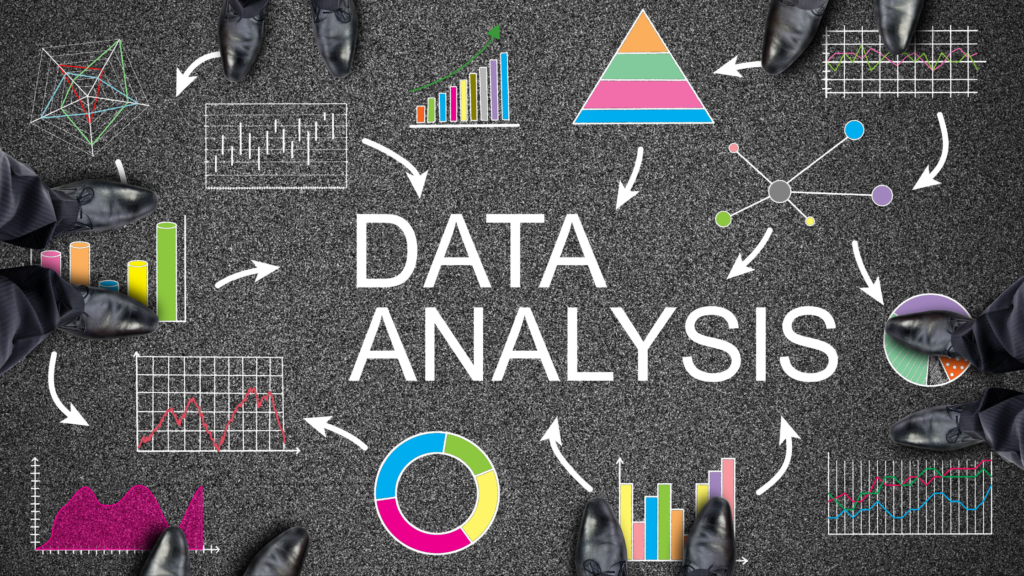Table of Contents
Hello Data Science Enthusiasts,
Welcome to another edition of Data Science Demystified! This time, we’re diving into a core algorithm in unsupervised learning: K-means clustering. Whether you’re new to machine learning or an experienced data scientist looking to refresh your skills, K-means remains one of the most widely used clustering techniques in data analysis. Today, we will break down how to implement K-means clustering using Python, step by step. Not only will we explore the theory behind the algorithm, but we’ll also offer you practical coding examples and insights into real-world applications.
By the end of this newsletter, you will be equipped with the knowledge to start implementing K-means clustering in your own projects and understand its significance in data segmentation and pattern recognition.
Let’s get started!
K-Means Clustering Made Simple: A Beginner’s Guide
Have you ever grouped similar things together, like sorting your clothes by color or size? That’s kind of what K-means clustering does with data. It’s a machine learning method that organizes information into groups, called clusters, based on how similar the data points are. This guide explains how K-means works, its real-world applications, and how to handle challenges like outliers.
What is K-Means Clustering?
K-means clustering is a way to divide data into K groups based on their similarities. You decide the number of groups or clusters, and the algorithm organizes the data accordingly. K-means is popular because it’s simple, fast, and widely used in areas like marketing, image processing, and fraud detection. Here’s how it works:
- The algorithm picks random points, called centroids, to represent the center of each cluster.
- Each data point is assigned to the closest centroid.
- The centroids are adjusted to be at the center of their clusters.
- This process repeats until the centroids stop moving to make the clusters stable.
How K-Means Clustering Works in Practice
K-means is a straightforward method for grouping data, making it easy to understand and apply. It begins with random initial guesses for the clusters and then gradually refines these groups by adjusting the centroids to be closer to the corresponding data points. This iterative process results in meaningful clusters, such as categorizing flowers based on their size and petal width. Its simplicity and effectiveness are the reasons why K-means is widely used. Let’s break it down step-by-step:
- Choose the number of clusters (“K”).
- Pick random points (centroids) as the starting center of each cluster.
- Assign each data point to its nearest centroid.
- Recalculate the centroids based on the data points in each cluster.
- Repeat until the centroids don’t move or until you hit a set number of steps.
For example, if you’re grouping flowers by size and petal width, K-means clusters them based on these features.
Why K-Means is Unique
K-means is not just another clustering method; it offers a unique combination of simplicity and efficiency. Unlike some algorithms, you determine the number of clusters you need from the outset. Its emphasis on distinct, non-overlapping clusters and impressive speed make it a standout choice. However, it does have limitations, such as assuming clusters are round, which means it is better suited for specific types of datasets.
K-means stands out compared to other clustering methods:
- Predefined Number of Clusters: You decide how many clusters you want in advance, unlike other methods that figure it out during the process.
- Shape of Clusters: It assumes clusters are round and evenly sized, making it less flexible than algorithms like DBSCAN, which can handle irregular shapes.
- Speed: K-means works quickly, even with large datasets, while methods like hierarchical clustering can be slower.
- Clear Assignments: Each data point belongs to just one cluster, while other algorithms might allow overlaps.
Step by Step implementation
Implementing K-Means with Python
Here’s an example to explain the basic clustering using K-means. It is a simple way to use K-means on the Iris dataset, a popular dataset about flowers.
- Import all the necessary libraries.
import pandas as pd
import matplotlib.pyplot as plt
from sklearn.datasets import load_iris
from sklearn.cluster import KMeans
from sklearn.metrics import silhouette_score- Load the built-in Iris dataset that comes with Scikit-Learn.
# Load the built-in Iris dataset
iris = load_iris()
data = pd.DataFrame(iris.data, columns=iris.feature_names)- The next step is to clean, pre-process the data, and analyze the data. Please refer to Data Cleaning and EDA for more details. Now you can apply K-Means on the pre-processed data.
# define and fit the model
kmeans = KMeans(n_clusters=2, random_state=42)
kmeans.fit(data)
# Add cluster labels to the data
data['Cluster'] = kmeans.predict(data)- We can now visualize the results in a scatter plot
# Scatter plot
plt.scatter(data.iloc[:, 0], data.iloc[:, 1], c=data['Cluster'], cmap='viridis')
plt.xlabel('Sepal Length')
plt.ylabel('Sepal Width')
plt.title('K-Means Clustering on Iris Dataset')
plt.show()
- Calculate the silhouette score to evaluate the quality of the clusters
#silhouette score
score = silhouette_score(data.iloc[:, :-1], data['Cluster'])
print(f'Silhouette Score: {score}')Dealing with Outliers in K-Means
Outliers can significantly affect K-means clustering because the algorithm assumes all data points belong neatly in clusters. However, there are effective strategies to manage these challenging data points. By identifying, transforming, or even removing outliers, you can maintain the accuracy of your results. In some cases, switching to a more robust algorithm may be the best solution. Outliers are data points that do not fit well into any cluster that can disrupt the K-means clustering process. Here’s how to manage them:
- Detect Outliers: Use methods like Isolation Forest or Local Outlier Factors to flag anomalies.
- Transform the Data: Apply techniques like log transformations to reduce the effect of extreme values.
- Remove Outliers: Exclude them from your dataset or assign them to separate clusters.
- Use Alternatives: Try algorithms like K-medoids or DBSCAN, which handle outliers better than K-means.
Real-Life Applications of K-Means Clustering
K-means is not just a theoretical tool; it plays a significant role in addressing real-world problems. It is essential for grouping customers based on their preferences and enhancing recommendation systems. K-means is central to many applications we use every day, whether it involves sorting documents, processing images, or detecting fraud. Its powerful results are evident across various industries. K-means clustering is used in many fields to solve real-world problems:
- Customer Segmentation: Businesses group customers based on their shopping habits to create personalized campaigns.
- Document Organization: It helps sort documents by topics for easier access and retrieval.
- Image Processing: In computer vision, K-means groups pixels to identify objects in an image.
- Fraud Detection: By spotting unusual patterns, it helps detect fraudulent activities.
- Recommendation Systems: It clusters items like movies or songs, enabling personalized suggestions.
Best Practices for Better Results
- Use the Elbow Method to decide the right number of clusters by looking for the “bend” in the curve of the within-cluster sum of squares.
- Preprocess your data to remove or minimize outliers.
- Experiment with different initialization methods to avoid poor results due to random centroid placement.
Conclusion
K-means clustering is a straightforward yet powerful method for grouping data based on similarities. Although it is easy to implement and proves effective for many applications, it is crucial to address challenges such as outliers and to select the appropriate number of clusters. By adhering to best practices and utilizing tools like Python, you can effectively apply K-means to discover patterns in data and tackle real-world problems.
Career Corner
Understanding and applying clustering techniques, such as K-means, is a crucial skill in the data science job market. Whether you are analyzing customer segmentation for marketing, identifying patterns in image recognition, or performing anomaly detection, clustering helps you find meaningful groupings in unlabeled data. As more companies adopt data-driven strategies, the ability to implement and optimize clustering models can set you apart in your career.
Furthermore, K-means serves as a foundational algorithm that paves the way for more advanced clustering techniques, such as Hierarchical Clustering. Mastering K-means will position you for success as you explore other unsupervised learning methods.
Tech Trends Spotlight
Clustering in Big Data
As datasets grow larger, traditional clustering techniques like K-means can struggle with scalability. However, tools such as Apache Spark and H2O.ai offer distributed implementations of K-means, making it possible to run clustering on big data efficiently. These platforms leverage parallel processing, allowing data scientists to analyze vast amounts of data in less time.
Moreover, combining clustering techniques with deep learning methods is gaining popularity in fields like image segmentation, natural language processing, and recommendation systems. Hybrid approaches, such as Deep Embedded Clustering (DEC), take advantage of neural networks to generate meaningful representations of data that K-means can further refine into clusters.
Tools and Resources Recommendations
To make your K-means clustering projects easier and more efficient, we recommend exploring the following tools and GitHub repositories:
- Scikit-learn: The go-to library for implementing machine learning algorithms in Python, including K-means clustering. Explore Scikit-learn
- Clustering in Spark with MLlib: If you’re dealing with big data, Spark’s MLlib provides a scalable implementation of K-means. GitHub – Apache Spark
- k-means-constrained: This repository provides an implementation of K-means clustering with size constraints on the clusters, which is useful for real-world applications where you need clusters to have a minimum or maximum size. Visit GitHub Repo
- MiniBatchKMeans: An efficient implementation of K-means for large datasets. It works by using mini-batches instead of the entire dataset to compute clusters. Explore MiniBatchKMeans
Call to Action
Are you ready to implement K-means clustering in your next data science project? Start by experimenting with the Iris dataset and try clustering a more complex dataset of your choice. Use the tools and techniques outlined in this newsletter, and don’t forget to share your insights and results with our LinkedIn group Data Science Demystified Network. Let’s learn together!
Also, if you found this newsletter helpful, consider forwarding it to a colleague who could benefit from a deep dive into K-means clustering!
Closing Thoughts
K-means clustering is a powerful and versatile technique for discovering patterns in your data. Whether you’re working on a small dataset or scaling your clustering efforts to big data, the tools and techniques you’ve learned in this newsletter will help you achieve success. Remember, clustering is all about exploration, and finding the right number of clusters is often an iterative process.
We hope this newsletter has helped you gain a better understanding of K-means and inspired you to apply it to your own projects. As always, keep experimenting, stay curious, and don’t hesitate to share your work with the data science community.
#KMeansClustering #DataScience #MachineLearning #AI #PythonProgramming #DataAnalysis #Clustering #UnsupervisedLearning #BigData #TechForBeginners #AI #MachineLearning #DataScience #DataScienceDemystified #Python #ApacheSpark



